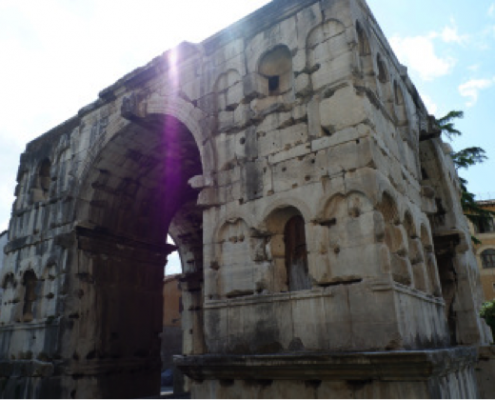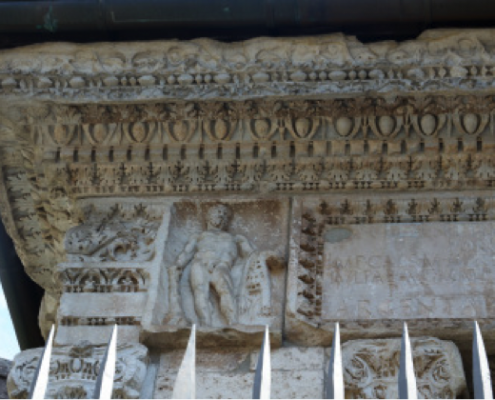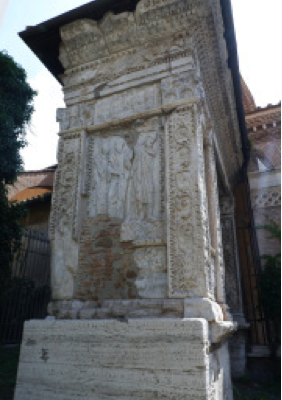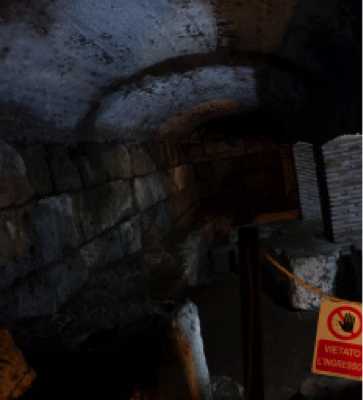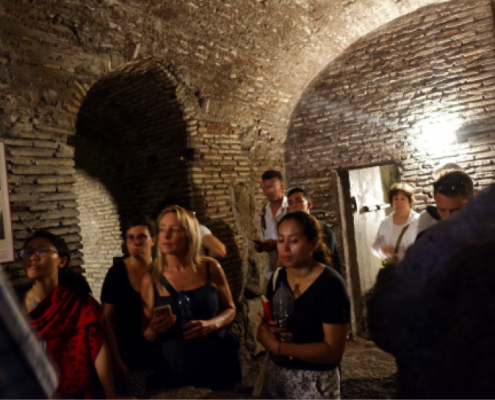By Andrea Zachrich
The first Tuesday, which is the first full day of the program, we headed out to see the Forum Boarium. This used to be a bustling part of the city used for commerce (mainly trading of cattle), political speeches, and housed places of worship. Today, however, its a relatively quiet part of the city. We visited two temples, two arches, and two churches here. I thought the most interesting places were the temples because they are actually ancient structures, while the churches were built over ancient temples and altars, and its hard to see what’s left of them now.
The two temples are both related to the area they were found in. The round temple is called Hercules Olivarius (Hercules of Olives) or Hercules Victor. It would have been a very expensive temple to build because it is made of imported Greek marble. At the time it was built during the Republic in late 2nd century BC, marble had not yet been discovered in Italy. It is called Hercules of Olives because it was dedicated by a rich merchant who sold olives (according to an inscription found inside the temple). It survives in such good shape today because it was turned into a Christian church, and because it has been restored and cleaned. Ancient buildings that were used as churches often survive in much better condition than buildings that were left alone, used as housing, or stripped for building materials. During the middle ages and the Renaissance, people believed that it was a temple of Vesta, goddess of the hearth, because it was round and temples of Vesta were always round. However, when restoring the temple, an inscription stating who built the temple and its dedication to Hercules was found inside, confirming its identity. The wooden roof is a modern addition, but that’s what it would most likely have looked like in antiquity. Additionally, there are many other depictions and items dedicated to Hercules in the Forum Boarium because it is said to be the place in Rome where the hero stopped while completing his twelve trials.
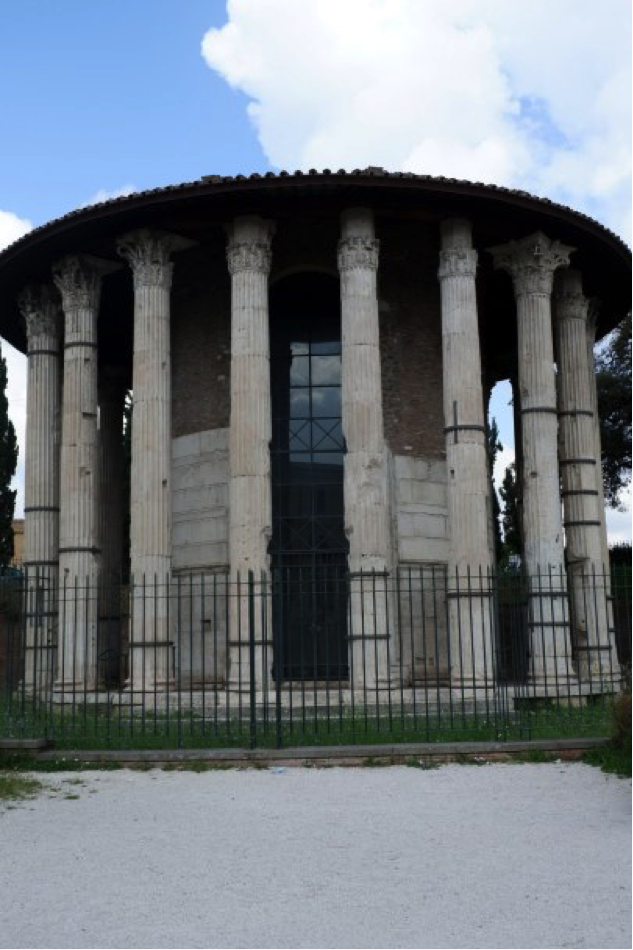
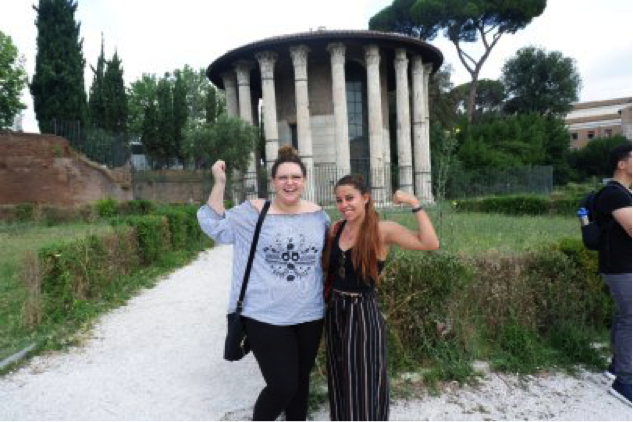

The rectangular temple in the Forum Boarium is dedicated to the god Portunus, who is the god of ports. This is fitting, because the Forum Boarium is quite close to the Tiber river, and they would often trade goods in this area that had been shipped on the river. As with the round temple dedicated to Hercules, this temple was used as a church, and has been restored, and they have added a tile roof. It is also from the Republican era of the Roman empire. Unlike the round temple, this particular temple is made of travertine, which is a white stone used extensively in buildings Italy (including modern buildings). Most of the white stone you see in Rome is travertine. You can tell the difference between travertine and marble because travertine is much more porous than marble, and thus often gets dirtier much more quickly.
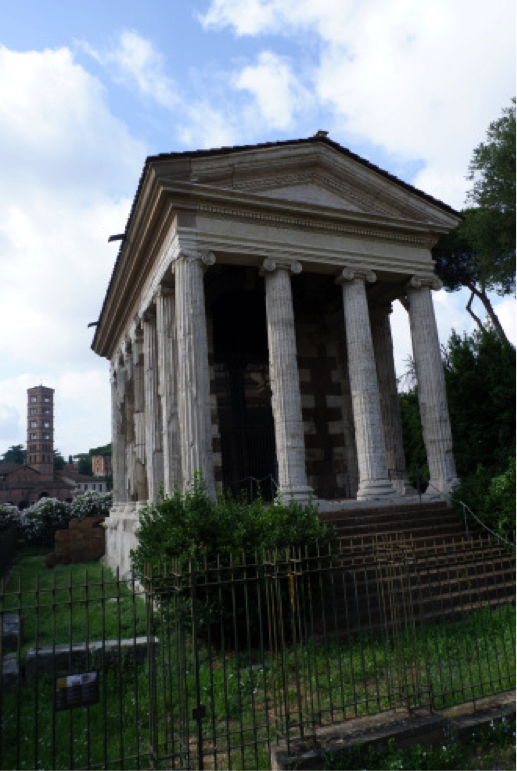
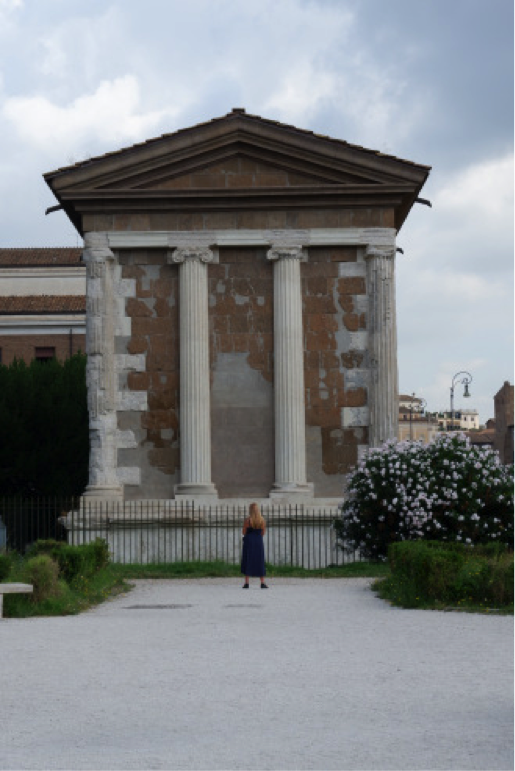
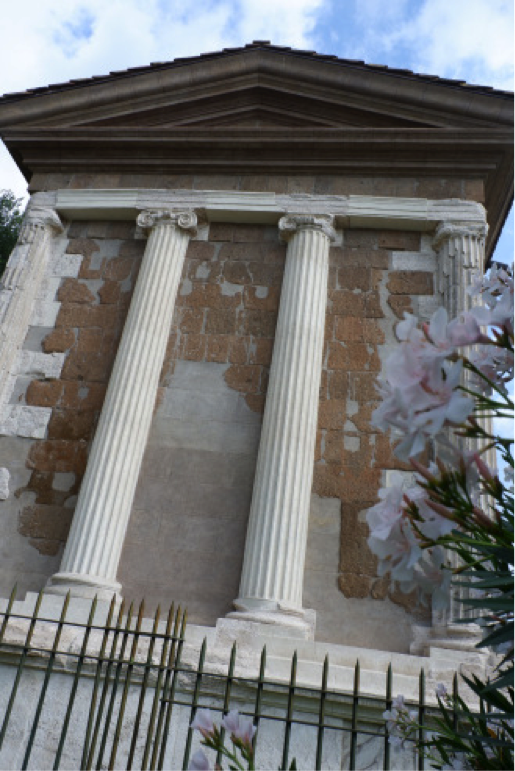
The temple is in a very typical Italic style. It has a raised porch that would have been used for political speeches and announcements. It has engaged columns built into the walls with free standing ones on the porch. It’s built in a rectangular shape with a pointed roof (although the roof is a restoration). In later times, the travertine was covered in reliefs sculpted out of stucco and painted in order to look like marble. None of these decorations survive today, but we can still get a pretty good idea of what the temple looked like.
There are also two arches that survive in the Forum Boarium, one of which we know a lot about and one which we know very little about. They are called the Arch of the Argentarii and the Arch of Janus/Constantine. The Arch of the Argentarii was built during the reign of Septimius Severus in the 3rd century AD as a tribute from the cattle merchants to the emperor. It survived essentially untouched (except by the elements) because it was incorporated into the side of a church. The main bit of damage done to the arch is actually contemporary with its building. After Caracalla killed his brother Geta (who was murdered while running to his mother and died in her arms), he erased Geta’s image and name from all of the monuments in Rome. The Roman Emperors were savage, but I suppose that’s part of what makes studying ancient Rome so fascinating.
The second arch, the Arch of Janus, is in much worse condition than the other one still standing in the Forum Boarium, although parts of it have been recently restored. The arch is called the arch of Janus because it is one of the few arches with four openings. It is also sometimes called the Arch of Constantine because it was built during the time period of his reign. It actually had the original top on the arch until the 18th century, when they removed it thinking it was a later addition. Modern scholars believe, however, that they unknowingly destroyed the original decoration. The Cloaca Maxima (the main sewer line of ancient Rome) runs directly down the center of the arch (underground of course). That may have significance, or it may be coincidental.
Also in the Forum Boarium are two churches that have ancient ruins under them, and one of them has the Hand of Truth (Roman Holiday anyone?), but you can only see the ancient ruins under one of the churches. Saint Nicola in Carcere is a church is built over three Roman temples, which are currently the foundations/crypt for the church. We got to go down there, and its creepy because they just casually have bones sitting in notch holes in the walls. You could reach out and touch them if you felt so inclined (but please don’t, obviously.) We didn’t get to see the ancient ruins under the other church, Santa Maria in Cosmedin, but it was a beautiful church. It’s one of the few medieval churches left in Rome (many were re-built during the Renaissance and Baroque period) and it has a beautiful floor made of small pieces of marble cut in a geometric pattern. This type of floor was made by the Cosmati brothers, and is popular for churches in Rome from the Medieval period. It is stunning.
Also, outside of this church is “The Hand of Truth” featured in the American movie Roman Holiday. This ancient Roman sewer cap, which depicts the face of the river god Oceanus, has a particularly interesting back story that has origins in the middle ages. Legend has it that if you tell the truth when you stick your hand in the mouth of Oceanus, then you get to keep your hand, but, if you lie, then you lose the hand. We didn’t want to risk losing a hand before we had to write our midterm, so we didn’t test if the myth was true while we there :).
The Forum Boarium is a great place to go for a lot of ancient Roman monuments fairly close together, and is one of the quieter places in Rome. It’s also right next to a very good pizza place in Testaccio Market called Casa Manco. It was a fun morning with a delicious lunch after!


